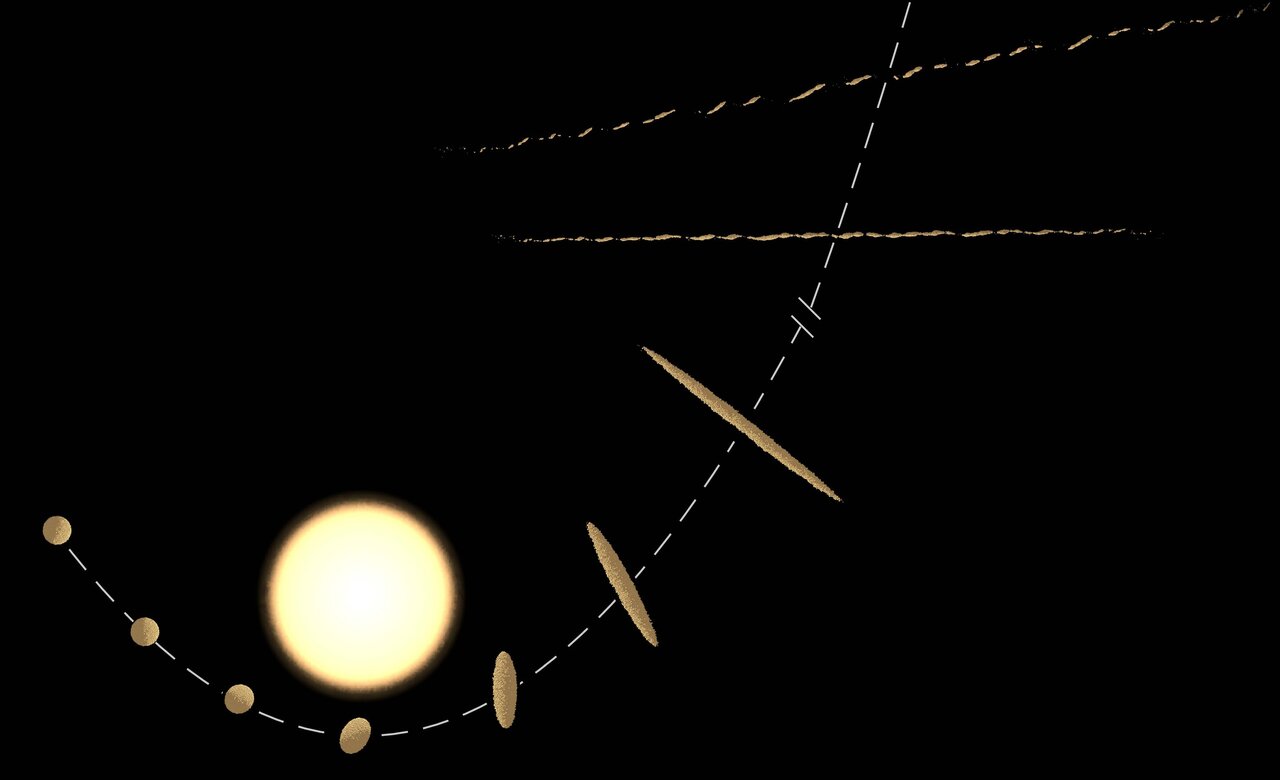The problem to me is our definition of "celestrial object" invariably assumes "formed within our solar system",
I, in all my years of science education, have never assumed this. Celestial means anything and
everything beyond the Earth's atmosphere. Stars and Galaxies, for example, have always been part of the definition for me!
As I stated, there is nothing wrong with it being an old comet kicked out of it's original star system and arriving, for a moment, amongst us and the sun.
Also, we have no evidence of a nucleus of ice and rock, merely the suggestion of ice and rock.
The evidence suggests that there is outgassing. Outgassing requires something for it to outgas. Ice & dust is a good bet. One would have to get a bit closer to do more experiments as to exactly what this is, alas I think it's on its way out for good.
Otherwise what's your explanation?
Note that:
"Asteroids are differentiated from comets...in the case of comets, the difference is one of composition: while asteroids are mainly composed of mineral and rock, comets are composed of dust and ice." Hence this suggestion by the researchers and it's classification.
Note also that these objects tend to form, according to our limited understanding, in different parts of a star system, so trying to figure out what it is, helps our understanding of its origins.
Our definition of a comet seems dependent solely on bodies believed to have formed on the outskirts of our solar system
No, I don't think there are any astronomers who would have said that comets can't exist in other star systems. Oort clouds are, I believe, expected to form around all stars as they are born, so why wouldn't comets be absolutely everywhere, orbiting every star system?
Plus as there are a great many of them, given that they are cosmically tiny by mass, (for example, I believe 5000+ are known in our system), so with what we know of the gravitational 'nudging' and 'deflection' one could imagine that there are great many Oort cloud objects, (which we would define as comets), being flung all over the universe and escaping their original systems.
Anyway, seems like a good start for trying to understand it. Maybe, if fresh evidence turns up, this theory will be wrong, but we have to go with the evidence that we have




